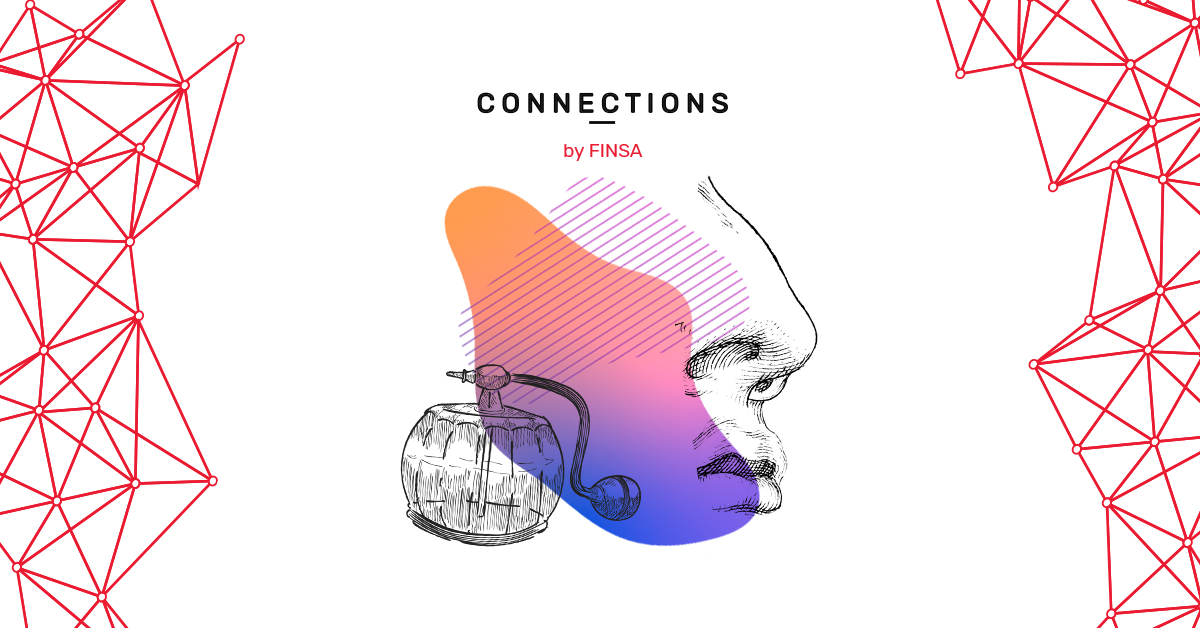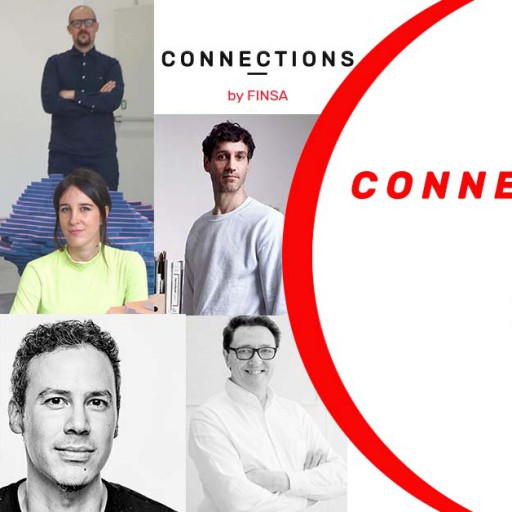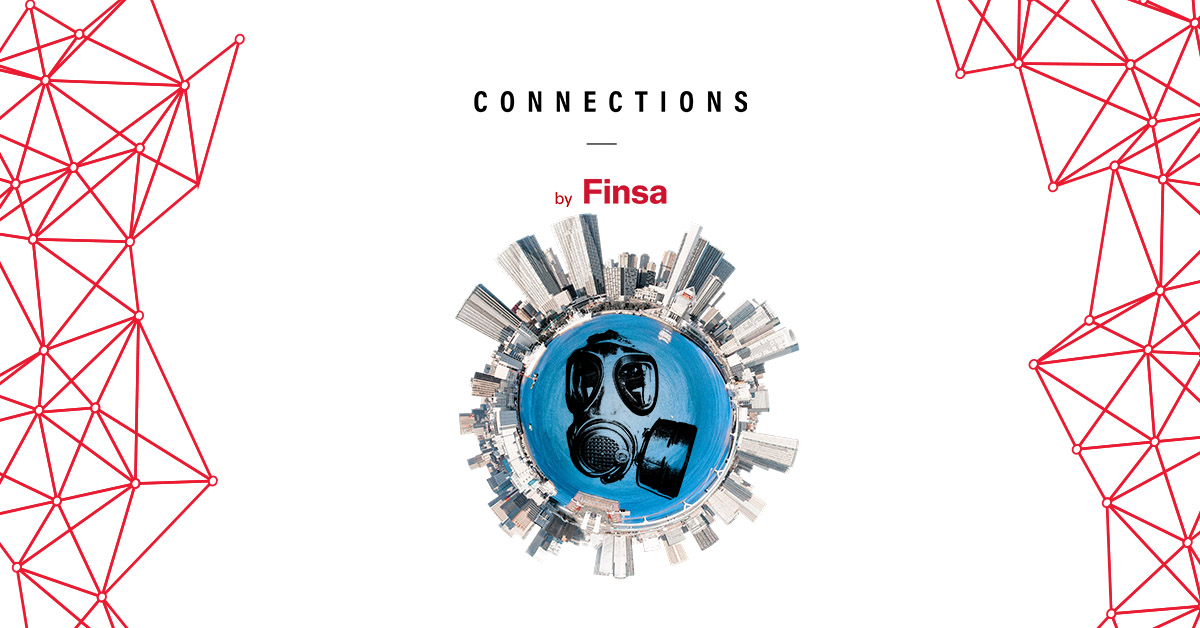In the late nineties, a Spanish television commercial directed by Isabel Coixet asked viewers the question “what do clouds smell like?”. Since then, another question has arisen. What things smell like is key, yes, but rather than the cumulus and nimbus, if a brand wants to be successful, it’s all about its scent. In fact, scent marketing has become more than just another trend and is now a legitimate opportunity for businesses, an essential tool for capturing clients that ensures they will remember products or brands for longer.

The impact of scent marketing: you never forget a smell
Our sense of smell is the king of our five senses and is much more powerful than our sight or our hearing when it comes to stirring up emotions. It also has the greatest impact on our memory. According to researchers at Rockefeller University in New York, the human nose can distinguish between more than a billion different scent combinations. They also discovered that, we remember 35% of what we smell compared to just 2% of what we hear, 5% of what we hear, and 1% of what we touch. Why? Because our sense of smell has a direct line to our primordial reptilian brain, which is where we create impactful and long-lasting memories in our subconscious, and which in turn helps us make decisions. Raquel Mascaraque, a neuromarketing specialist and an online educator who shares curious facts about the brain, explains the concept further in the below video:
That’s why seduction through scent isn’t just another sensorial marketing tactic. It is, perhaps, the most effective of them all. For this reason, companies have been dangling in front of our noses, so to speak, and using them as a tool to help improve sales.
Studies from all over the world have shown that eight out of ten consumers decide whether to enter a store based on how it smells. This is nothing new. Travelling salesmen used to light incense to attract potential clients, and many classic scents have been used over and over because they are proven to work in this way, not to mention bakeries and pastry shops all over the world who know just how powerful an aroma can be.
One famous example of scent marketing in action is that of Starbucks. The company intentionally fills its stores with the delicious aroma of freshly brewed coffee, which is immediately noticed by passers-by, awakening their desire to walk in and order a coffee.
Ver esta publicación en Instagram
Corporate fragrances: what does your brand smell like?
Sensorial olfactory architecture is already a key part of many different types of brands. From fashion houses and car manufactures to cinemas, hospitals, and even funeral parlours, more and more businesses are adopting an odotype or corporate fragrance, a unique scent that forms part of a brand’s DNA in the same way that its personality and its history do. In Spain, several companies have been in the business of creating corporate fragrances for many years. Ibiza-based Ambisent has thousands of Spanish clients, including SMEs and big names such as Aena, Mapfre, Multiópticas, Ikea, McDonald’s, and Mercedes Benz. Dejavu Brands, which has been operating out of Madrid since 2010 and has its own in-house perfumer, has worked with NH Hotels, the Ritz-Carlton, Intimissimi, Scalpers, Día, and Loewe. Then there’s Akewuele, the company that gave the Finsa space at Casa Decor its own scent and have also created the fragrances you smell when you walk into stores such as Massimo Dutti, Oysho, Adidas, Leroy Merlin, or a BMW showroom.
How industries use scents
But can a scent really make us buy more? There aren’t any studies that show a direct relationship between the two, however there is a general consensus that a pleasant olfactory experience helps to establish an emotional bond with a brand that, over time, becomes very valuable. It’s been scientifically proven that the right fragrance can capture a customer’s attention, which increases the amount of time they spend in a commercial space and, as a result, the chances of them buying something. It also creates an imprint on their subconscious which makes them loyal to the brand and their products.
Coco Chanel was known to douse the fitting rooms in her stores with her famous perfume. Disney fills its theme parks with the smell of popcorn to make visitors hungry, something that a lot of cinemas do, too. And there are a lot more examples of fragrances that we very quickly associate with brands. We previously mentioned Massimo Dutti, and we know that Inditex has used scent marketing extensively in its stores, but perhaps the most well-known and identifiable example is the scent used in its Zara Home stores. Then there is Play-Doh, a pioneer when it comes to using scent as a marketing tool. In 2018, it even trademarked its characteristic scent, which is similar to vanilla. Kids shoe brand Bubblegummers smells like – you guessed it – bubblegum. The soles of the brand’s shoes give off that unmistakable scent, which is why, even if some customers don’t remember the name of the brand they are looking for, they will ask for “those shoes that smell like bubblegum”.
Ver esta publicación en Instagram
Ver esta publicación en Instagram
Scent as an experience for tourists
Scent marketing is now also a part of the tourism industry, which understands that our sense of smell plays a fundamental part in making an experience both pleasant and memorable. Hotels, airlines, and airports strengthen their connection with their clients using their scent identities to convey a sense of wellbeing and comfort. One example is Singapore Airlines, a company that has been using its own fragrance – a combination of rose, lavender, and lemon – for many years. Flight attendants wear it as a perfume, it’s added to the hot towels that are offered to passengers before take-off, and it floats around the cabin during the flight. United Airlines takes a similar approach, perfuming its airport lounges with a mix of orange zest and figs. Brussels airport and Heathrow each have their own scent, too.
Ver esta publicación en Instagram
Many hotel chains, including Hyatt and Westin, douse their lobbies, hallways, and rooms with unique fragrances that help to convey a sense of cosiness, wellbeing, and exclusivity. Some even produce soap with the same fragrance that guests can buy so they can be reminded of their memorable stay once they get home.
Yummy-smelling packages
Scent marketing campaigns aren’t just limited to making points of sale smell good. In fact, this tactic is now a part of packaging, meaning that even online customers won’t miss out on the sensorial experience. Soap and cosmetics store The Singular Olivia provides customers with a unique experience when they receive their package, with great attention to detail and spectacular design, something which helps strengthen the brand. Triticum, an artisanal bakery that makes pre-baked, haute cuisine bread, offers another great example of a unique olfactory experience, with the cardboard boxes they use to send bread to their clients having some strategically placed holes so that the smell of the bread reaches their nostrils before they’ve even opened the package, making the product much more attractive.
Ver esta publicación en Instagram
Ver esta publicación en Instagram
Ver esta publicación en Instagram
Scented billboards and bus shelters
Scented billboards are another great option. A tourism campaign for La Rioja installed some that featured scent dispensers at several Madrid metro stations, allowing travellers to get to know the autonomous community just by using their nose. The chosen scents were of course evocative of wine. Trident did the same at the centrally located Sol station when they launched a new type of gum, and Cacaolat and Zumosol made bus shelters smell like chocolate and oranges, respectively.
There is one example, however, that really stands out from the crowd. As an experiment, Dunkin Donuts installed vaporizers that made the inside of sponsored South Korean buses smell like coffee. The result was many passengers hopping off the bus and heading into the nearest Dunkin Donuts. During the campaign, the company saw a 29% increase in customers buying coffee and a 16% increase in visits to their store overall.
Finally: buying the experience through smell
But there is a new trend starting to emerge. The new frontier in scent marketing is buying the experience of through smell. Scents aren’t just being used as a sensorial marketing tool anymore; they are now are being used to directly leverage sales. The scent is the experience, which makes a product memorable and differentiates it from others which, in turn, makes it more likely to be bought. What you’re actually buying is what that fragrance makes you experience.
This trend has taken off in food and drink markets in China and Japan, where they offer products whose experience is based on how it smells. A Chinese tea brand has created a gift box in which all the products, including candles and diffuser reeds, smell like the recipient’s favourite tea, with the added bonus that it’s considered a ‘wellness’ fragrance, meaning that they promise their customers that the scent will make them feel good. The same thing is happening with several Japanese brands that sell ready-to-drink tea, with consumers buying the olfactory experience the teas offer rather than the beverages themselves.
Ver esta publicación en Instagram
‘Keep it simple’ scent marketing
It’s clear that scent marketing is about more than just fragrances. Nevertheless, simple scents are actually the ones that work best. It’s not a good idea to go overboard because even the most pleasant of scents can be overwhelming if too much is used, creating the so-called ‘wall of fragrance’ that makes customers not want to return.
Ambient scents should be periphery, subtle, and contribute to the brand experience without being noticed too much or distracting the customer. American fashion retail Abercrombie & Fitch knows this all too well. Their stores became famous for their musky aroma, a masculine fragrance they sold as Fierce, but they eventually replaced it with white bergamot. Why? Well, it seems that a study showed that the original fragrance made their customers anxious. So, take note: choose well when it comes to the scent you want to include in your next project.




